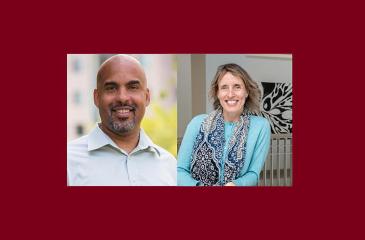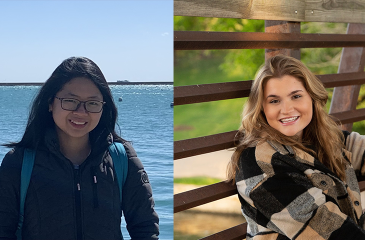Talking autism spectrum disorder with U of M
About one in 36 or 2.8% of 8-year old children in Minnesota have been identified with autism spectrum disorder. Jennifer Hall-Lande, psychologist and research associate at the Institute on Community Integration and the Masonic Institute of the Developing Brain, shares her expertise on how to support a child with autism spectrum disorder.
Q: What is autism spectrum disorder?
Dr. Hall-Lande: Autism spectrum disorder or autism is a developmental disability that typically appears during the early childhood years and is characterized by challenges with social skills, communication and repetitive or atypical behaviors. Sensory issues and challenges with executive functioning are also common. While autism is defined by a certain set of behaviors, it is a “spectrum,” so it can affect children differently and to varying degrees.
Each child with autism has a distinct set of strengths and challenges and a unique pattern of behavior and level of needs. Some children with autism have difficulty learning skills. Other children with autism may learn things quickly, but have trouble communicating ideas, adjusting to social situations, and applying their skills in their everyday living environments. Some people with autism may need significant support in their daily lives, while others may need less support and live entirely independently.
Q: What are early signs of autism?
Dr. Hall-Lande: Signs of autism emerge early, with most children showing signs by two years old. Some children show signs of autism as early as infancy. Early signs may be subtle, but can include characteristics such as reduced eye contact, lack of engagement with caregiver or peers, delayed language, lack of response to their name, repetitive movement or mannerisms, atypical interests or sensory issues.
Other children may develop typically for the first few months or years of their life, but then become withdrawn or lose language skills they have already acquired. If families notice any of these signs or have concerns, they should talk with their pediatrician or health care provider.
Q: How does autism affect children in Minnesota?
Dr. Hall-Lande: In Minnesota, approximately 1 in 36, or 2.8%, of 8-year-old children were identified with autism spectrum disorder in 2018. So, a typical 3rd grade class would likely have at least one child identified with autism. This tells us that autism is no longer a low-incidence disability and many children and families are affected by autism. We also know that approximately four boys to every one girl are identified. And while we know we can identify autism before age 2, the average age of clinical diagnosis is much later, at 5 years, 3 months. Children can be identified as early as 18 to 24 months, and research tells us the earlier a child is identified, the better their developmental outcomes will be.
On a broader level, the numbers tell us we will need to continue to build our capacity to support children with autism and their families.
Q. How can families support a child with autism?
Dr. Hall-Lande: Early diagnosis and early intervention are critical. Early diagnosis helps a child to receive the support and services that they need to support their growth and development. It can also help provide support to the family to build skills and support their child.
If families have concerns, they should talk with their pediatrician or health care provider. Families should also connect with their school district for additional support and services within the educational setting. Parents should know that their child has both strengths and challenges and use the supports and professionals available to help their child to learn, grow and thrive.
Q. What additional resources are available to parents?
Dr. Hall-Lande: There are a wealth of free resources to learn about the early signs of autism:
Minnesota Autism Developmental Disabilities Monitoring network: This network provides population-based prevalence estimates of autism spectrum disorder and other developmental disabilities within communities in Minnesota. The Centers for Disease Control and Prevention provides estimates across communities in the U.S.
Learn the Signs. Act Early, CDC: From birth to 5 years, your child should reach milestones in how they play, learn, speak, act and move. This site provides resources and tools for parents to track child development and tips for acting early on developmental concerns.
Autism Navigator: This collection of web-based tools, courses and extensive videos bring autism science to communities, including resources for families and professionals in learning about early signs of autism spectrum disorder.
Autism Society of Minnesota (AUSM): The Autism Society of Minnesota aims to enhance the lives of individuals and families affected by autism spectrum disorder by providing information, classes and and resources.
About Jennifer Hall-Lande
Jennifer Hall-Lande, Ph.D., is a psychologist and research associate at the Institute on Community Integration at the University of Minnesota. Dr. Hall-Lande does clinical work in child development, including early identification of autism spectrum disorder and other neurodevelopmental disabilities. Dr. Hall-Lande conducts research in autism spectrum disorder and intellectual disability prevalence and identification of developmental delays and disabilities. She is also an investigator on the Autism and Developmental Disabilities Monitoring Network and has led many “Learn the Signs. Act Early.” projects.
-30-
About the College of Education and Human Development
The University of Minnesota College of Education and Human Development (CEHD) strives to teach, advance research and engage with the community to increase opportunities for all individuals. As the third largest college on the Twin Cities campus, CEHD research and specialties focus on a range of challenges, including: educational equity, teaching and learning innovations, children’s mental health and development, family resilience, and healthy aging. Learn more at cehd.umn.edu.
About “Talking...with U of M”
“Talking...with U of M” is a resource whereby University of Minnesota faculty answer questions on current and other topics of general interest. Feel free to republish this content. If you would like to schedule an interview with the faculty member or have topics you’d like the University of Minnesota to explore for future “Talking...with U of M,” please contact University Public Relations at [email protected].
This story was originally published by The University of Minnesota on April 13, 2022.



